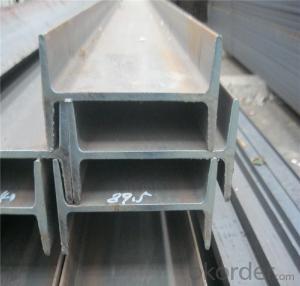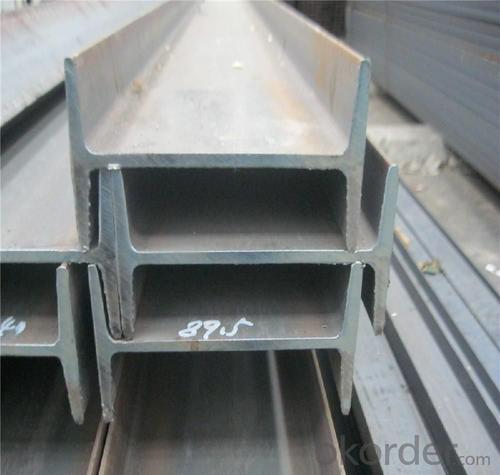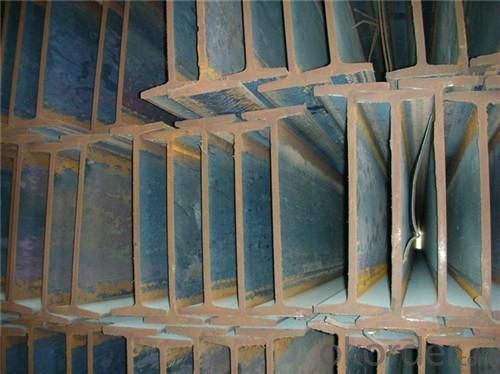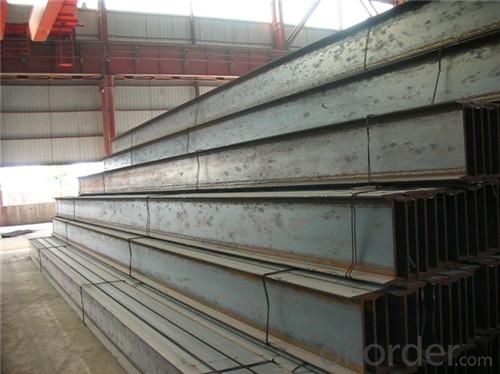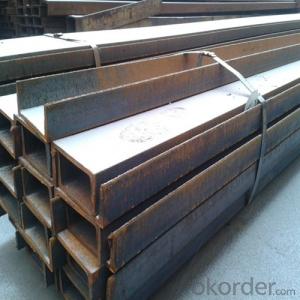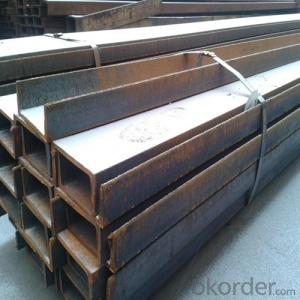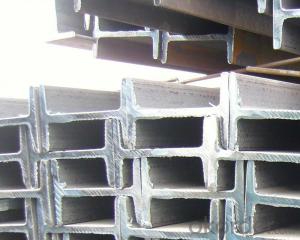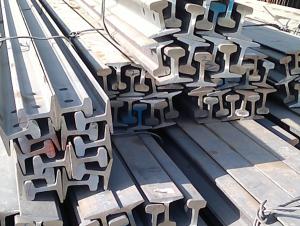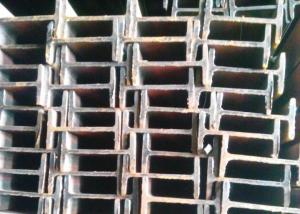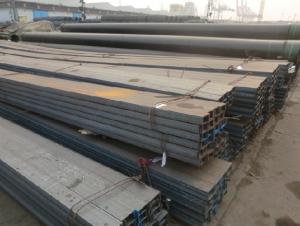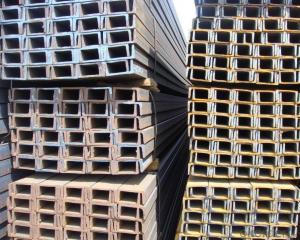80MM to 270MM stainless steel I-Beam for construction GB Q235B
- Loading Port:
- Tianjin
- Payment Terms:
- TT or LC
- Min Order Qty:
- 25 m.t.
- Supply Capability:
- 100000 m.t./month
OKorder Service Pledge
OKorder Financial Service
You Might Also Like
Product Description:
OKorder is offering 80MM to 270MM stainless steel I-Beam for construction GB Q235B at great prices with worldwide shipping. Our supplier is a world-class manufacturer of steel, with our products utilized the world over. OKorder annually supplies products to European, North American and Asian markets. We provide quotations within 24 hours of receiving an inquiry and guarantee competitive prices.
Product Applications:
80MM to 270MM stainless steel I-Beam are ideal for structural applications and are widely used in the construction of buildings and bridges, and the manufacturing, petrochemical, and transportation industries.
Product Advantages:
OKorder's Steel I-Beam are durable, strong, and resist corrosion.
Main Product Features:
· Premium quality
· Prompt delivery & seaworthy packing (30 days after receiving deposit)
· Corrosion resistance
· Can be recycled and reused
· Mill test certification
· Professional Service
· Competitive pricing
Product Specifications:
Detail information of Steel I Beam
Height: | 100-400mm |
Thickness: | 4.5-14.5mm |
Surface: | Painted or Galvanized. As customers’ requirements |
Length: | As customers’ requirements |
Size: | 100*68*4.4mm--400*146*14.5mm . |
Punch: | Can be punched as customer's drawing |
Material: | Q195/Q235/ Q215/Q345/SS400/S235JR, A36,SS400,SS540 ASTM A36 |
Product Advantage
Prime quality
Competitive price
Professional service
Prompt delivery & Seaworthy packing
Mill Test Certificate
Company information
Our company is engaged in the production and trade of i beam, h beam, steel pipe, steel plate, steel coil, angle bar, channel beam,galvanized steel coil, gi coil, ppgi coil, wire rod, stainless steel and so on .
We have established business relationships with clients in the Southeast Asia,South Asia, North America, and many other countries and regions. Our goal is to provide all our customers with qualified and low-cost steel products.
Packaging & Delivery
Packaging Detail: Standard seaworthy packing
Delivery Detail: 7-10 days after receiving deposit
Product Picture
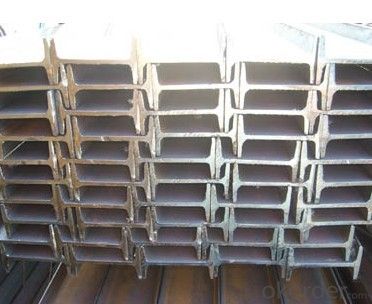
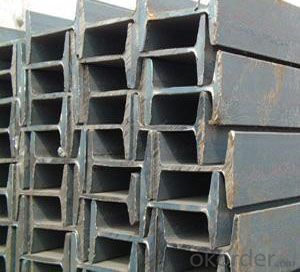
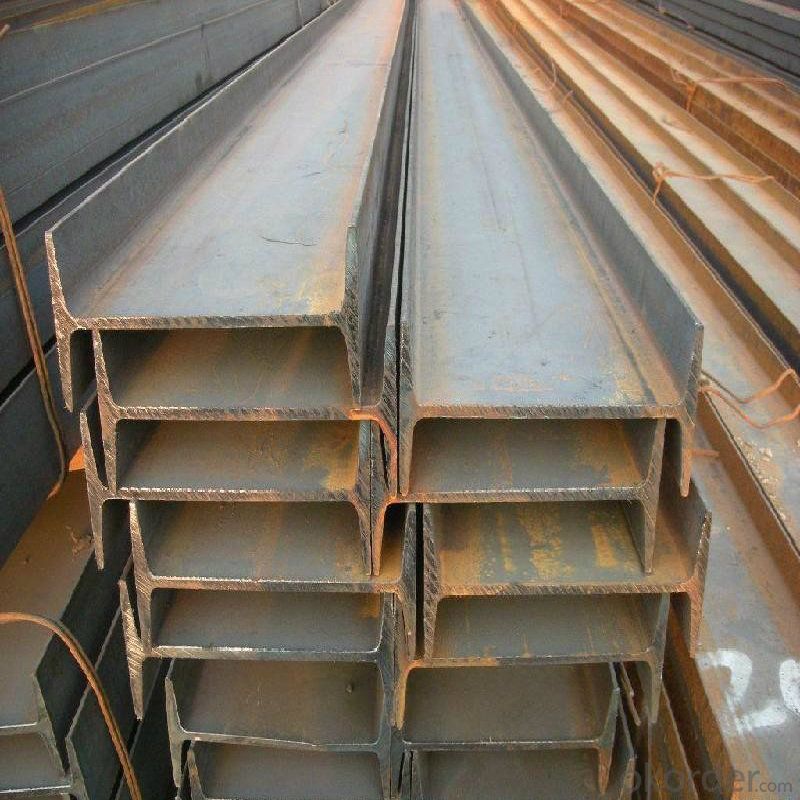
FAQ:
Q1: Why buy Materials & Equipment from OKorder.com?
A1: All products offered byOKorder.com are carefully selected from China's most reliable manufacturing enterprises. Through its ISO certifications, OKorder.com adheres to the highest standards and a commitment to supply chain safety and customer satisfaction.
Q2: How soon can we receive the product after purchase?
A2: Within three days of placing an order, we will begin production. The specific shipping date is dependent upon international and government factors, but is typically 7 to 10 workdays.
- Q: Can steel I-beams be used in seismic or high-wind areas?
- Indeed, seismic or high-wind areas can accommodate the utilization of steel I-beams. Steel, being an exceptionally durable and robust material, is well-suited to endure the forces produced by earthquakes or powerful winds. In seismic regions, steel I-beams are deliberately engineered to possess sufficient ductility and flexibility to assimilate and dissipate the energy generated during an earthquake, thereby guaranteeing the stability of the structure. Similarly, in high-wind areas, steel I-beams can be designed to withstand the lateral forces unleashed by strong winds, thereby averting structural collapse or damage. Furthermore, steel I-beams can be customized to adhere to specific building codes and standards applicable to seismic or high-wind areas, thus ensuring the safety and stability of the structure.
- Q: What is the weight of a steel I-beam?
- The weight of a steel I-beam can vary depending on its dimensions and the specific type of steel used. Generally, the weight of a steel I-beam is calculated by multiplying its cross-sectional area by the density of steel. The cross-sectional area is determined by the height, width, and thickness of the beam. To provide a more specific answer, the weight of a steel I-beam can range from a few hundred pounds to several thousand pounds, depending on its size. For example, a 10-foot long I-beam with a height of 4 inches, width of 6 inches, and thickness of 0.25 inches may weigh around 31 pounds per foot, resulting in a total weight of approximately 310 pounds. It is important to note that these calculations are just estimates, and the actual weight of a steel I-beam should be confirmed with the manufacturer or through reference to engineering tables.
- Q: Can steel I-beams be used in hospitals?
- Yes, steel I-beams can be used in hospitals. Steel I-beams are commonly used in the construction industry for their strength and durability. In hospitals, steel I-beams can be used to provide structural support for the building, including supporting the floors, walls, and ceilings. They can also be used to create open spaces and large spans in the hospital design, allowing for flexible layouts and efficient use of space. Additionally, steel I-beams can be fire resistant, which is crucial in a hospital setting where safety is paramount. Overall, steel I-beams are a reliable and versatile choice for construction in hospitals.
- Q: How do you calculate the bending capacity of a steel I-beam?
- To calculate the bending capacity of a steel I-beam, several factors need to be considered. Firstly, the moment of inertia of the beam section must be determined using the dimensions of the cross-section. This can be done using formulas or by referring to standard tables. Next, the maximum allowable stress for the steel being used must be determined. This value is typically provided by the manufacturer or can be found in engineering handbooks. Finally, the bending moment applied to the beam needs to be calculated based on the load and its distribution. By comparing the bending moment to the bending capacity (calculated as the product of moment of inertia and allowable stress), it is possible to determine if the beam will withstand the applied load without exceeding its bending capacity.
- Q: Can steel I-beams be used for architectural canopies or awnings?
- Yes, steel I-beams can be used for architectural canopies or awnings. They provide strong structural support and can be customized to meet specific design requirements, making them a suitable choice for such applications.
- Q: What does H300 * 200 * 6 * 10 in steel structure mean?
- The H300 * 200 * 6 * 10 in the steel structure is H steel of height, width, web thickness, and wing plate thickness of 300mm, 200mm, 6mm and 10mm, respectively.
- Q: Can steel I-beams be used for highway overpasses?
- Indeed, highway overpasses can make use of steel I-beams. Owing to their robustness and resilience, steel I-beams are frequently employed in the construction of bridges and highway overpasses. They offer exceptional support and a remarkable capacity to bear heavy loads, rendering them suitable for enduring substantial traffic and the weight of vehicles traversing the overpass. Moreover, the fabrication and installation of steel I-beams can be accomplished with ease, making them a favored option for highway infrastructure ventures.
- Q: What is the maximum span length for steel I-beams?
- Various factors, including the applied load, the type and grade of steel used, and the desired deflection criteria, influence the maximum span length of steel I-beams. Generally, steel I-beams can cover significant distances due to their strong-to-weight ratio. However, determining a precise maximum span length without considering these factors is challenging. To ensure compliance with required load-bearing capacity and deflection limits, structural engineers typically analyze and design steel I-beams specifically for each project.
- Q: What are the maintenance requirements for steel I-beams in corrosive environments?
- To prevent deterioration and ensure the structural integrity of steel I-beams in corrosive environments, it is important to adhere to certain maintenance requirements. Here are several key guidelines for maintaining steel I-beams in such conditions: 1. Regular cleansing: Periodically cleanse the steel I-beams to eliminate any accumulated corrosive substances or deposits on the surface. This can be accomplished by using a mild detergent and water, followed by thorough rinsing. 2. Protective coatings: Apply protective coatings on the steel I-beams to establish a barrier against corrosive elements. These coatings may encompass paints, primers, or specialized corrosion-resistant coatings like zinc or epoxy coatings. The choice of coating will depend on the specific corrosive environment and the desired level of protection. 3. Inspection: Conduct routine inspections of the steel I-beams to detect any indications of corrosion or damage. Look for signs of rust, pitting, or other forms of deterioration. Regular inspections aid in early detection of issues, enabling timely repairs or maintenance. 4. Repairs and upkeep: If corrosion or damage is identified during inspections, it is imperative to promptly address the issue. Eliminate any loose or flaking coatings and repair the affected areas. This may involve sanding, priming, and repainting the steel I-beams or applying additional corrosion-resistant coatings. 5. Adequate drainage: Ensure proper drainage around the steel I-beams to prevent the accumulation of water or corrosive substances. Water pooling near the beams can expedite corrosion, so it is vital to design and uphold drainage systems to mitigate this risk. 6. Environmental controls: Consider implementing measures to control the corrosive environment. This could involve reducing exposure to corrosive substances, such as chemicals or pollutants, or implementing ventilation systems to minimize humidity levels. Such controls contribute to prolonging the lifespan of steel I-beams in corrosive environments. 7. Monitoring: Continuously monitor the condition of the steel I-beams to identify any changes or deterioration over time. This can be achieved through regular visual inspections, as well as the utilization of advanced monitoring techniques like corrosion probes or non-destructive testing methods. By adhering to these maintenance requirements, the lifespan of steel I-beams in corrosive environments can be significantly extended. It is crucial to develop a comprehensive maintenance plan tailored to the specific corrosive environment and regularly review and update it as necessary. Seeking advice from corrosion experts or structural engineers can also provide valuable insights and guidance in maintaining steel I-beams in corrosive environments.
- Q: What is H - shaped steel, what is C - shaped steel and what is I-beam?.
- C type steel is composed of automatic processing C type steel molding machine molding. C type steel forming machine can automatically complete the forming process of C steel according to the given size of C steel.
Send your message to us
80MM to 270MM stainless steel I-Beam for construction GB Q235B
- Loading Port:
- Tianjin
- Payment Terms:
- TT or LC
- Min Order Qty:
- 25 m.t.
- Supply Capability:
- 100000 m.t./month
OKorder Service Pledge
OKorder Financial Service
Similar products
Hot products
Hot Searches
Related keywords
